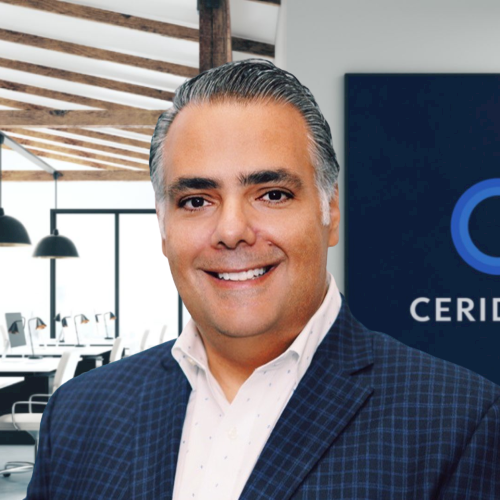Looking back to move forward: The healthcare sector’s biggest workforce challenges
The pandemic has permanently impacted the healthcare industry. Here’s new three trends impacting the future of care and how organizations can help their workforce respond to everchanging conditions.

Table of Contents
Compounding crises have made it difficult for healthcare workers to continue with the status quo. After being stretched to their breaking point during the COVID-19 pandemic, sector-wide issues such as chronic staffing shortages, unequal access to care, and precarious payment structures continue to place pressure on providers, but with even more complexity.
Many organizations have adopted new technology in recent years to tackle ongoing pressure and recoup losses associated with the pandemic. The only way forward is through widespread, systemic change to the healthcare system, starting with solving the workforce challenges that were there all along.
Stretched to the limits
Prior to the pandemic, healthcare providers were often struggling with staffing. For years, demand consistently outpaced supply, and that gap is growing still.
Chronic diseases are on the rise and baby boomers working in healthcare are retiring. As workers depart, demand for services is only increasing.[i] And while electronic medical records have helped with tracking patient data for more consistent care and better outcomes, they’re also labour intensive for providers. One study found clinicians spend 16 minutes on average per patient accessing the information necessary to provide care.[ii]
The pandemic has heightened the urgency to find solutions for better population health and more equitable access to services – especially preventative care. Preparing for the future is essential especially with the healthcare industry still feeling the aftershock, from taking care of communities with long covid and bracing for the wave of retiring baby boomers. After being stretched too thin for too long, healthcare workers need new strategies to free up time from administrative tasks and focus on their patients. They need more autonomy over their schedule to better manage their own burnout and work-life balance.
The costly impact of the pandemic
There’s a prolonged strain on the American healthcare system from the pandemic, one which will far outlast the outbreak itself. Healthcare delivery systems are facing higher costs because of shortages for both staffing and supplies. Inflation in consumer prices is reaching rates that haven’t been seen in decades.[iii] The healthcare industry must address this increasing cost burden in the short term and build a plan for organizational resilience for the long term.
COVID-19-related costs have spread beyond hospitalisations across the healthcare ecosystem, impacting areas from behavioural health to chronic conditions. With many providers struggling to staff their programs and facilities, these effects could increase the cost of care by $57 billion by 2027.[iv]
The result will be an increased need to “do more with less,” which will put significant pressure on a workforce that was already stretched to capacity prior to the pandemic.
Healthcare organizations will need rethink how they work if they want to improve health outcomes for citizens and address issues like inequality at a time when operating margins are painfully thin. Solutions will need to address both the past and the future: Leaders will need to simultaneously look back at what was already broken before the pandemic and look forward as to how the healthcare system should change for the future.
Here are three new realities for the healthcare industry, and how existing workforce challenges will need to be addressed to prepare for future success:
1. Hospitals are no longer the main hub for patient care
Healthcare remains in a stressful state even as pandemic precautions fade into the past for the greater population.
The strain on hospitals was one of the widely publicised effects of the COVID-19 pandemic. The lack of space or resources to care for patients in hospitals could have led to many preventable deaths.
This reality has healthcare providers reconsidering the role of hospitals as a “hub” for patient care, with the alternative being to spread out care among skilled nursing homes, walk-in clinics, in-home care, and pharmacies.[v] Integrating clinical care with non-clinical services, such as schools, public housing, and social services, could be a positive step toward addressing the social determinants of care, increase preventative care, and improve population health.[vi]
The steep rise in demand for urgent healthcare services during the pandemic also led to a host of short-term solutions. Some hospitals reallocated physicians and nurses who normally focus on elective procedures to the front lines, while schools allowed fourth-year medical students to graduate early and join the cause. These exceptions took some strain off physicians, who could focus their efforts elsewhere. Shortages of resources and personnel are still a persistent issue that can’t be solved with short-term allowances.
So, what does this mean for the healthcare workforce? We’re in a period of significant structural change, one where workforce resilience and adaptability are essential. Technology will undoubtedly play a key role in helping the healthcare workforce gain the skills needed to adapt to new ways of working. For example, a mobile workforce management system will become essential for deskless, traveling workers who need access to company communications on the go, as well as to their schedule and timesheets.
Additionally, the right learning platform can be personalised to serve up a relevant set of courses and learning moments embedded right into that person’s daily work. It can also be used as a training strategy to reskill and upskill employees at scale.
This change management strategy can help align employees’ work and interests with your organization’s goals and ensure an optimal care experience for patients.
2. Healthcare workers are burning out of the industry
The rate of burnout among healthcare practitioners was already a serious issue prior to the pandemic. The New England Journal of Medicine found that more than half of health workers report experiencing some level of burnout, with many also experiencing insomnia, depression, anxiety, and post-traumatic stress disorder.[vii] Healthcare workers have faced significant stress, and many are leaving their jobs to pursue opportunities that offer greater flexibility and alignment with their personal values.
With staffing shortages, the resulting increase in absenteeism and higher turnover becomes a vicious circle that breeds further burnout, ultimately resulting in a lower quality of patient care. In fact, the ECRI Institute placed staffing shortages in first place on its list of the 2022 Top 10 Patient Safety Concerns.[viii] The pandemic aftershock has put a tremendous strain on an industry that was already understaffed and facing a shortage of skilled talent.
The demand for care continues to grow, but the healthcare system remains understaffed. The Committee for Economic Development in Australia found the annual workforce growth for aged care workers would need to double to meet the meet the minimum standard.[ix]
Burnout presents itself in individuals, but it’s fundamentally rooted in systems. For healthcare organizations, it’s important to consider how to make caring for the caregiver a priority all the time, not just during times of crisis.
As organizations continue to accelerate adoption of human capital management technology to improve operational efficiency and training, they should also seek to understand how these tools can help to improve workforce mental health and wellness. Offering greater flexibility and work-life balance to employees can be essential for improving morale and empowering people to do impactful work.
One way is by reducing the administrative burden on clinical staff with more efficient scheduling and workforce management workflows, allowing more time to focus on patients. Scheduling comes with many challenges from staying on top of changing legislative requirements to managing staffing demand for how many patients require urgent care.
Another is through tools like sentiment analysis, which measures patterns in the emotional states of employees through data analytics and employee pulse surveys. These tools allow managers and leaders to better understand how their employees are doing, and what factors are actively causing disengagement, stress, absenteeism, and turnover, so that action can be taken.
3. Patients control how and when healthcare is delivered
Staff is dealing with increased workloads with all the safety protocols that have become standard following the pandemic. In-office safety procedures have created delays in care and added new barriers that can discourage patients from seeking treatment, one of the many continuing operational challenges of the enduring pandemic. Many clinics have reduced the number of patients treated every day, limited walk-in capacity, and added questioning days prior to examination, all actions that have restricted access to healthcare.
Telemedicine has become an essential common piece of the healthcare puzzle by empowering patients to receive care on their terms from their own home. Many non-urgent healthcare services, patient screenings, and consultations are happening online or over the phone.
McKinsey estimates up to $265 billion worth of care services for Medicare beneficiaries could shift from traditional facilities to the home by 2025 without a reduction in quality or access.[x]
With the rise of digital health, healthcare providers can improve patient outcomes and increase operational efficiency. Digital health tools such as wearables, remote patient monitoring devices, and telemedicine platforms empower patients to manage their health from anywhere, at any time, and on any device. This has the potential to reduce the need for hospital visits and increase patient engagement.
That means healthcare organizations will need to ensure their workforces are prepared to provide best-in-class care virtually. For many aged care and ambulatory clinic workers, this can mean virtual consultations, pre-appointment screenings, and patient touchpoints that reduce the need to travel.
Integrating telemedicine into the healthcare system for the long term means not only teaching providers to use the technology, but also revisiting scheduling and triaging processes, billing practices, and the soft skills needed to facilitate successful patient interactions in both digital and on-site settings.[xi] The right workforce management system can help organizations forecast their staffing needs efficiently and empower their people to build schedules that work for everyone.
Moving forward
The healthcare industry will always be in a state of change, but now is the time to solve workforce challenges that have been here all along. Preparing your workforces for change starts with creating a culture of resilience. People are rising to challenges, but we also need to think about the structural changes needed in the healthcare sector to support our caregivers. To deliver top quality care, our caregivers need to receive top quality support in their everyday work. The right workforce management solution can intelligently manage your workforce operations and create an employee-first culture to help your people manage change.
Read our Prescribing the Future guide for strategies to build a future-ready healthcare workforce
This post was originally published on July 7, 2020 and was updated on April 28, 2023 for recency and to include new perspectives on the topic.
[i] Peter Breadon, Lachlan Fox, and Owain Emslie, The Australian Centre for Disease Control (ACDC): Highway to health, Grattan Institute, February 2023.
[ii] Marc Overhage, MD, PhD, and David McCallie Jr., MD, Physician Time Spent Using the Electronic Health Record During Outpatient Encounters, Annals of Internal Medicine, February 2020
[iii] Shubham, Singhal, Aneesh Krishna, “Consumer prices are rising fast, and healthcare isn’t far behind,” McKinsey, Febrary 2022.
[iv] Addie Fleron, Pooja Kumar, Shubham Singhal, and Matt Wilson, “The gathering storm: The affordability challenge of endemic COVID-19,” McKinsey, September 2022.
[v] Stuart M. Butler, PhD, After COVID-19 – Thinking Differently About Running the Health Care System, JAMA Network, April 2020
[vi] Stuart M. Butler, PhD, After COVID-19 – Thinking Differently About Running the Health Care System, JAMA Network, April 2020
[vii] Vivek H. Murthy, M.D., M.B.A., Confronting Health Workers Burnout and Well-Being, The New England Journal of Medicine, August 2022.
[viii] Edward Nuber, “ECRI’s Top 10 Patient Safety Risks for 2022,” ECRI Blog, March 2022.
[ix] Duty of Care: Meeting the Aged Care Workforce Challenge, CEDA, 2021.
[x] Oleg Bestsenny, Michelle Chmielewski, Anne Koffel, and Amit Shah, From facility to home: How healthcare could shift by 2025, McKinsey, 2022.
[xi] “Australia working towards ‘permanent’ telehealth,” Healthcare IT News, 2021.
You may also like:
Ready to get started?


